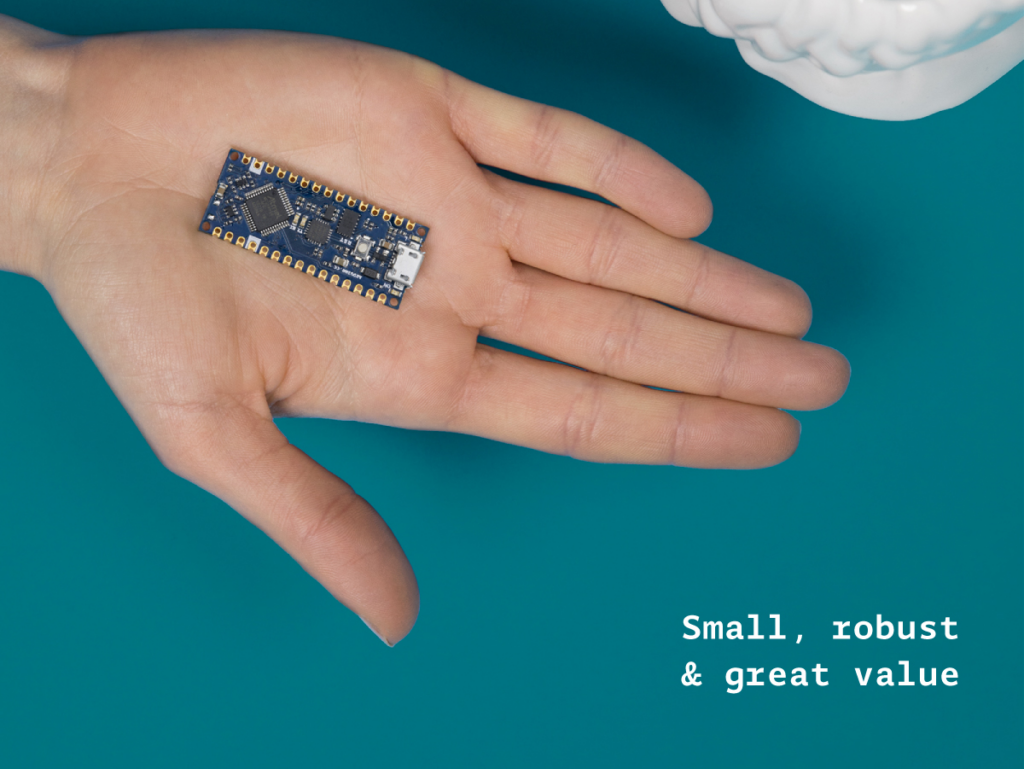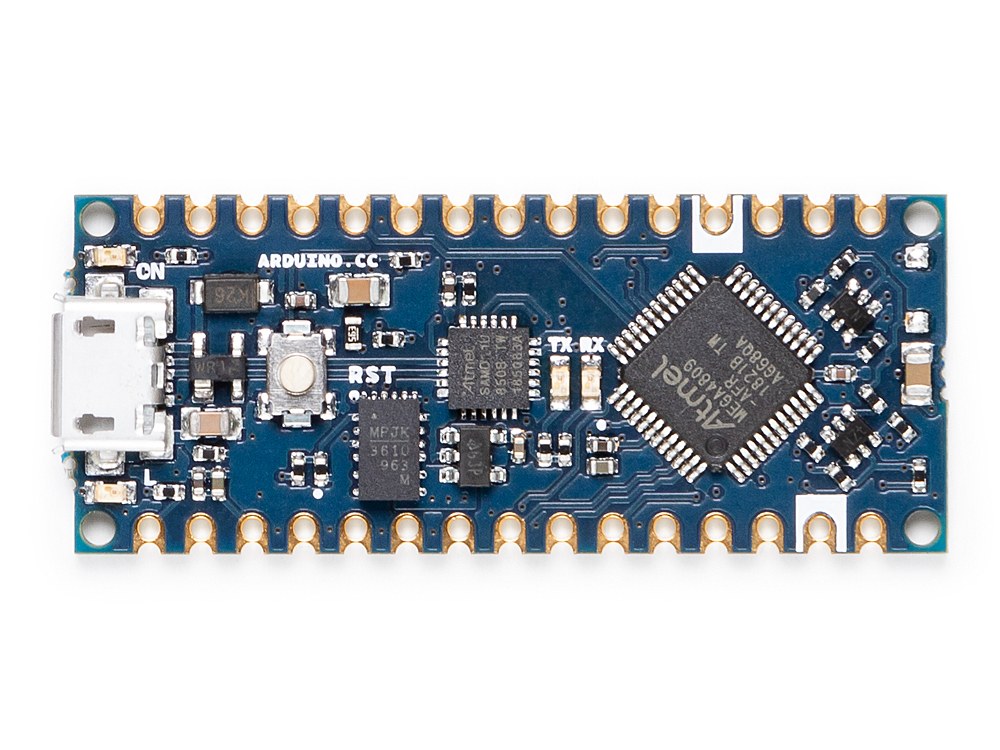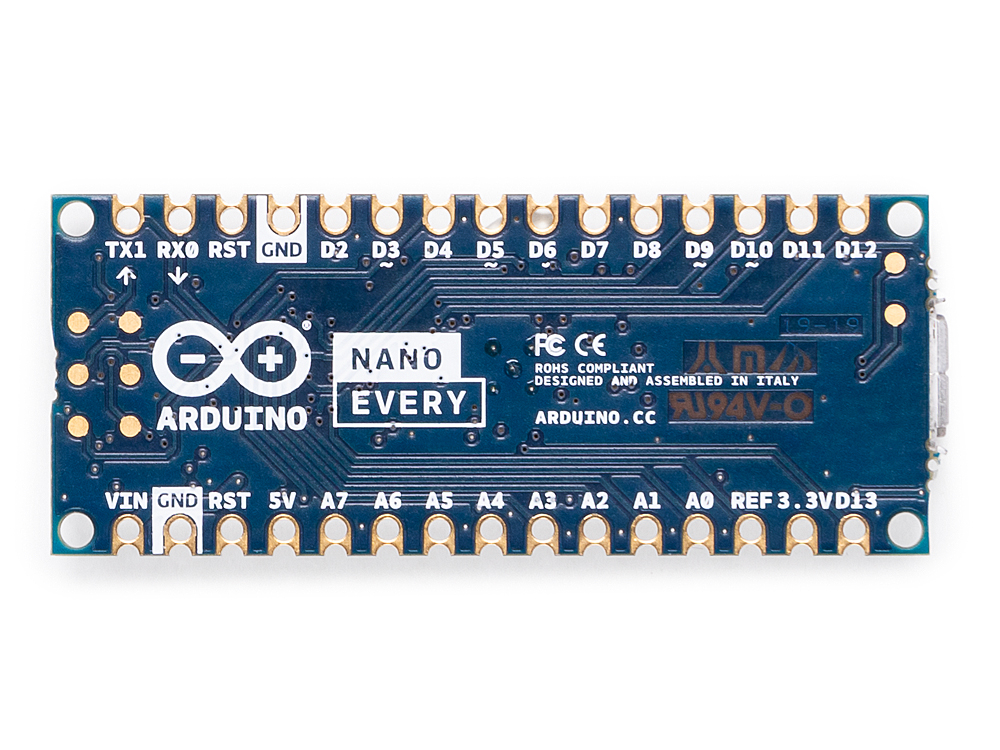Deep dive with Dario: Get to know the Arduino Nano Every

The original Arduino Nano occupies a special place in many makers’ hearts. The tiny footprint (48×18 mm — around half a stick of gum), reliability and tons of examples makes the Nano perfect for wearables, drones — in fact any project made to last.
The Nano is back! The new entry-level Arduino Nano Every manages to pack in even more features at an even lower price — just $12.50 / €11.40 without headers — and is backwards compatible with the original. Dario Pennisi led the development of the board, so we sat down with him to learn more.
Why did you decide to create the Arduino Nano Every?

The size of Arduino Nano Every makes it ideal for wearable projects; in experiments, in prototypes or in a full cosplay setup! Sensors and motors can be connected without too much fuss which means it’s great for robotics, drones and 3D printing, too.
Searching for “Arduino Nano project” returns millions of results for the original. But you also find people complaining about boards not working. Of course, those boards are usually clones — not genuine Arduino boards! Clones can have reliability issues which mean you need to pay for more, or are frustrated trying to get them to work.
So this is why we made the Arduino Nano Every. It’s reliable, affordable and more powerful. The newer ATmega4809 microcontroller fixes limitations of older ATmega328P-based boards — you can add a second hardware serial port! More peripherals and memory means you can tackle more ambitious projects. The Configurable Custom Logic (CCL) is a great way to get beginners more interested in hardware. We’ve used a quality USB chip so people won’t have connection or driver issues. The separate processor handling the USB interface also makes it possible, using a custom firmware, to implement different USB classes such as Human Interface Device (HID) instead of just the classic CDC/UART.
So not only is it a great choice for makers — in buying a genuine Arduino they will be supporting us in continuing to contribute to open source for the whole community to benefit from.
Can you tell us the three key features of Nano Every?

- New processor with more memory and new peripherals, still 5V capable. The added memory will unleash creativity and open to more complex applications and the new peripheral set, which includes a second serial port, will finally allow communicating at the same time with a PC and with peripherals such as a wireless interface or a GPS.
- The new power supply architecture based on a high efficiency DC-DC converter allows powering the board at up to 21V and to drive output peripherals with up to 950mA without overheating.
- Castellated contacts and flush bottom side allow soldering the Nano Every directly on a board as a traditional SMT component, opening the possibility to reduce final product size and helping the use in volume applications.
So the processor is the same as the Uno WiFi R2 and it has more Flash and more RAM. The sketches made for the Nano are going to run on the Every as they are? Is it truly a replacement with zero modification in any Nano based project? Please elaborate.
Actually the ATmega4809 we use on the Uno WiFi R2 and Nano Every is not directly compatible with ATmega328P; however, we’ve implemented a compatibility layer that translates low level register writes without any overhead so the result is that most libraries and sketches, even those accessing directly GPIO registers, will work out of the box.
Why you decided to offer the board with no headers supplied or soldered in the basic package?
Not only are new Nano boards are offered without headers, they all are totally flat on the bottom side and offer castellated pads on the sides, so you can actually solder them on your PCB as a standard SMT component using a normal pick and place machine.
The price is really aggressive, did you compromise on Arduino quality standards to achieve this?
We’ll never give up on Arduino quality standards and we’re still manufacturing in Italy making sure that our ethical values are strictly followed. The lower price point on these products has been achieved thanks to a careful optimization on purchasing prices and by trimming our margins as we believe that it’s important to give makers the quality they deserve at competitive prices.
The Arduino Nano Every is now available for pre-order on the Arduino online store with headers (estimated shipping date: end of July 2019) or without headers mounted (estimated shipping date: mid-June 2019).